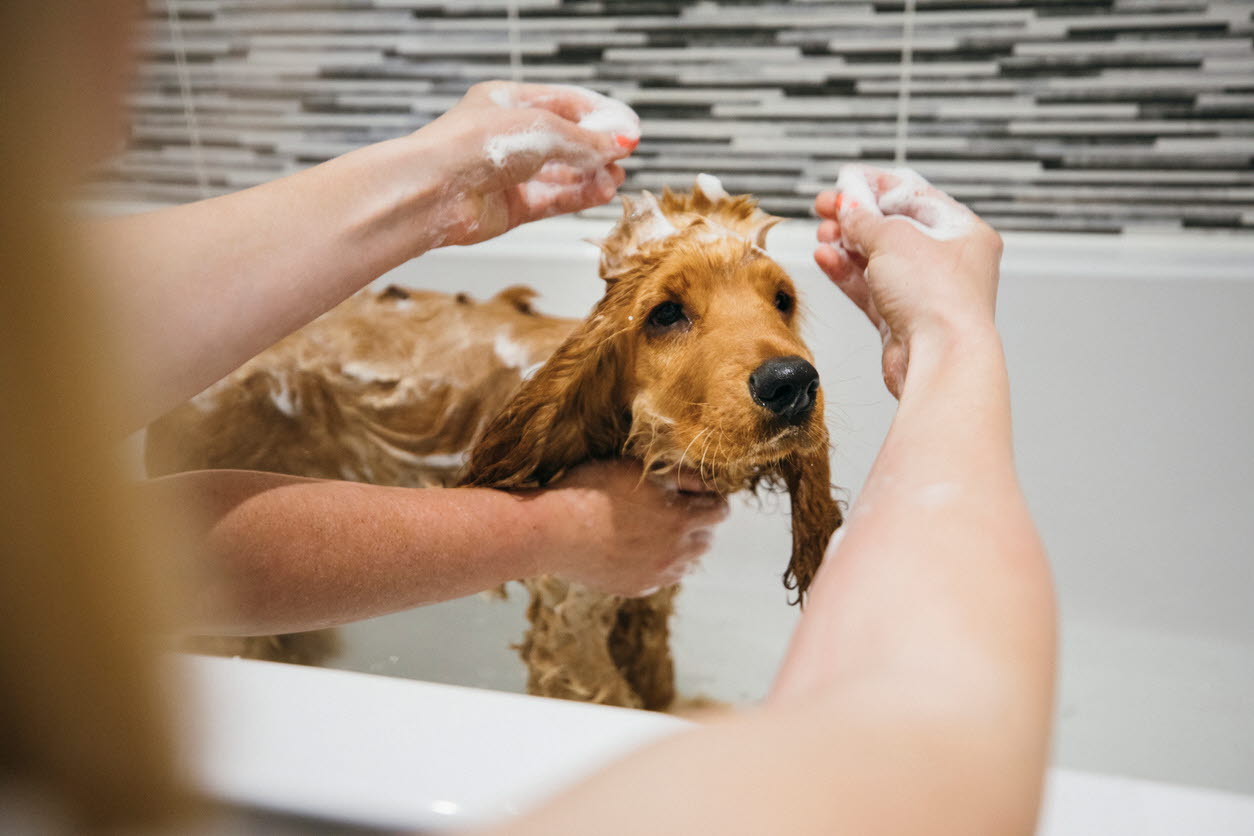How to bathe your dog

As much as we all love our dogs, sometimes a roll in the mud or that general ‘doggy’ odour necessitates a bath! Bathing a dog can involve you and the surrounding environment getting a little wetter than you anticipated, so if you are bathing your dog at home here are a few things to consider:
- Find an area that is water- Generally, a laundry, bathroom or tiled area is best, or you could bath them outdoors.
- Use non-slip mats or a towel to ensure that you and your dog remain safe on a slippery surface.
- Use a tub or trough that is large enough for your dog to comfortably stand and turn around in.
- Make sure you have access to warm water, ensuring that it is not too hot.
- Have multiple towels on hand for drying.
- Only use appropriate, dog-specific shampoos and conditioners.
- Ensure that you have everything set up and ready to go before starting to bath your dog
If these requirements are difficult to meet at home, there are many pet outlets or veterinary surgeries with hydrobath facilities available.
What shampoo or conditioner should I use to wash my dog?
Dogs have very sensitive skin and therefore using regular human shampoo and conditioner is not advised. Suitable dog shampoos and conditioners are available at veterinary clinics, pet stores and some supermarkets.
Your veterinarian may also guide you to use a specific shampoo which may help if your dog has particularly itchy or sensitive skin. For example, oatmeal-based, animal-specific products may be helpful for sensitive skin, whilst certain medicated dog shampoos may assist in the treatment of specific bacterial or fungal skin conditions.
How often should I bath my dog?
How often you wash your dog really depends on a few factors, such as the dog’s breed, coat length, and how dirty they get. For example, some dogs (especially those who do not shed) may require grooming or a bath every 6- 8 weeks. Other short-haired breeds may only need to be washed every few months or when they have rolled in the mud.
Certain health conditions, such as atopy or allergic skin disease may require more frequent baths. Or if your dog has a skin infection or ‘hot spot’ (superficial dermatitis) then only the affected area may require bathing. Your veterinarian will be able to guide you as to what is best for your dog.
Making bath time easier
Not all dogs enjoy being bathed. If you feel that your dog is afraid or that it is impossible to wash them safely, please contact your local veterinarian for further advice.
Here are some tips to make baths more enjoyable for your canine friend:
- Introduce your dog to bathing from when they are a young puppy.
- Introduce bathing gradually - for example, start by placing them in the bathing area and feeding high-value treats, then progress to wetting them with warm water in one area and gently drying and so on.
- Ensure you do not get water or shampoo in their eyes, nose or ears.
- Avoid using a noisy hairdryer or if you do, be sure to introduce it very slowly. If you are using a hairdryer, ensure that it is not used on the ‘hot’ setting and that it is held an adequate distance from your dog’s coat.
- Ensure bathing water is warm, not too hot or cold.
- Trial a training tool such as a ‘lick mat’, a mat which sticks to the wall of a bath and can be covered in a yummy treat such as peanut butter to distract your pet while bathing.
Making bath time fun will ensure an enjoyable experience for you and your dog. If you need further advice about bathing, canine shampoo products or access to hydrobathing facilities for your pet, then speak with your local veterinarian.
